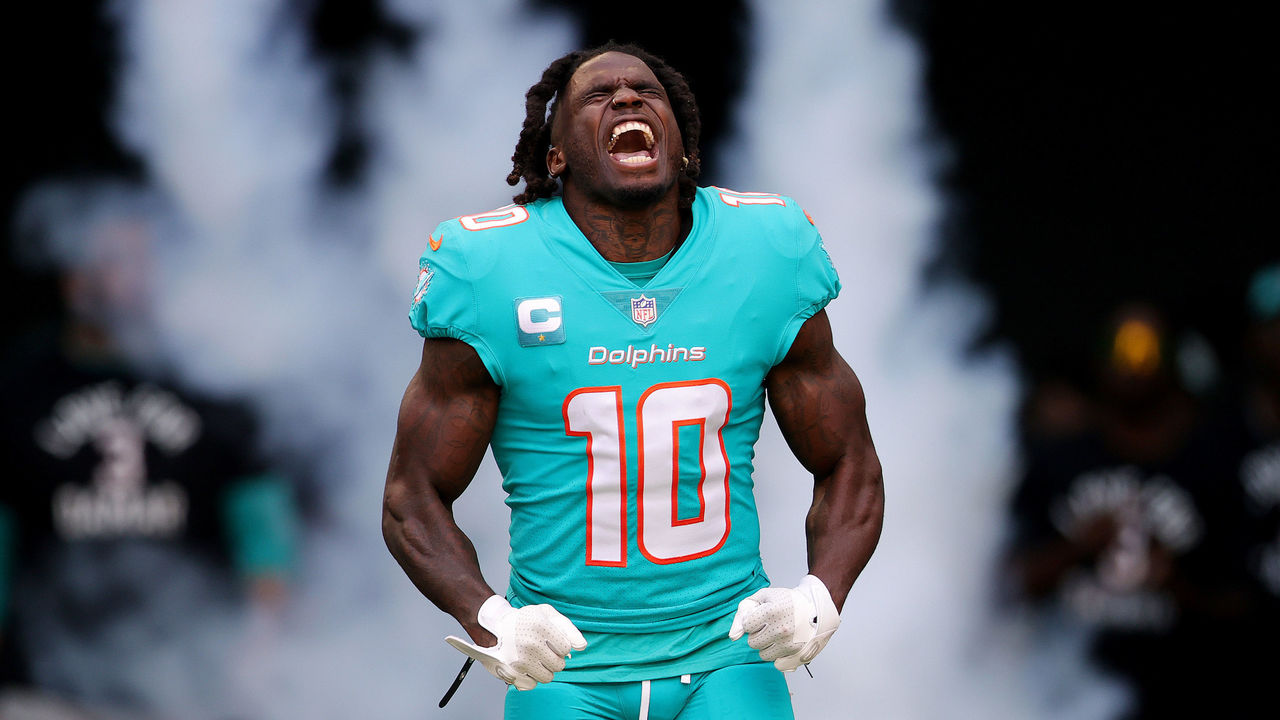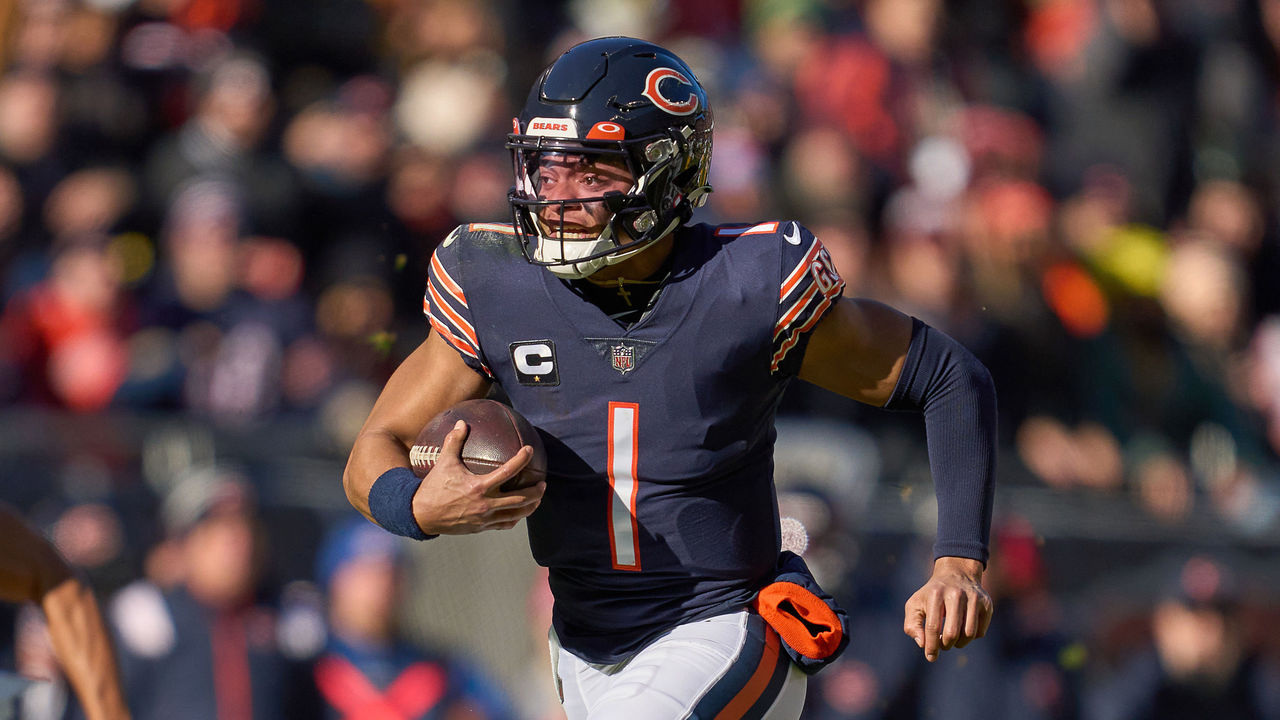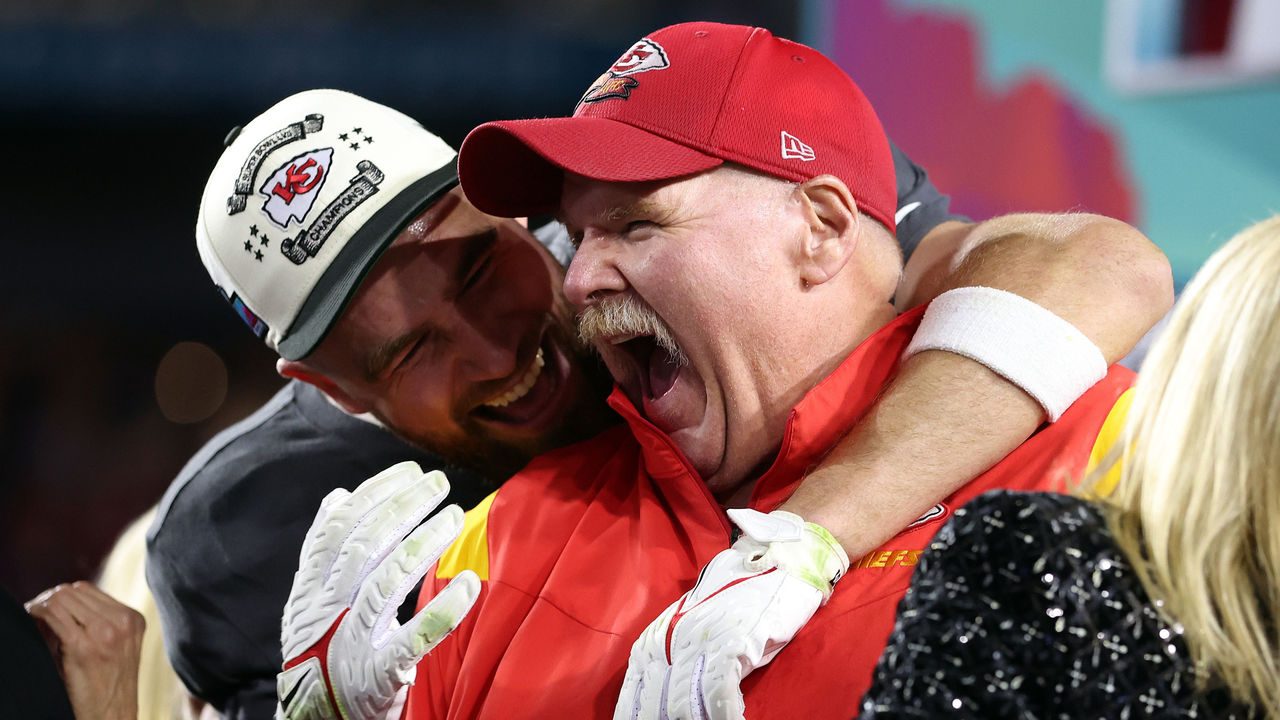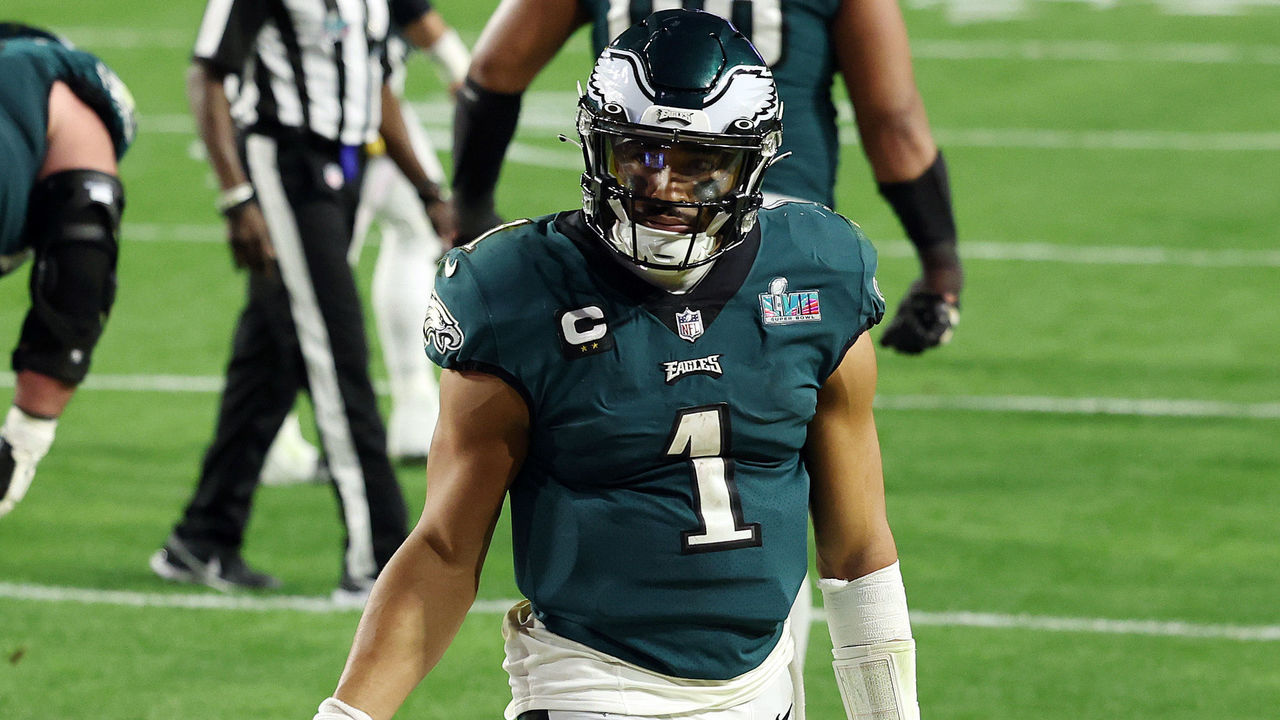5 major lessons we learned from the 2022 NFL season
Another NFL season full of intriguing storylines is officially in the books.
Before we transition to offseason mode and another few months of wild player movement, let's examine some of the more important developments and takeaways from the 2022 campaign.
WRs worth the price

An exploding wide receiver market was the big story in the NFL last offseason. Not only did a collection of star pass-catchers successfully push for contracts in the $25-million-to-$30-million range, but some came as part of trades in which teams also had to dish out premium draft picks.
The escalation of the price tag for top receivers seemed likely to leave at least a few teams looking foolish for their aggressive moves. Yet you'd be hard-pressed to find a single case where any big spender at the position is experiencing even the faintest amount of buyer's remorse.
Tyreek Hill immediately helped the Dolphins turn into one of the league's most explosive passing attacks, while A.J. Brown pushed the Eagles' offense over the top en route to a Super Bowl appearance. The Raiders were a major disappointment overall, but Davante Adams continued to dominate in his new home with a third consecutive first-team All-Pro honor.
Stefon Diggs, DK Metcalf, Deebo Samuel, and Terry McLaurin, who each received extensions worth $23 million-$24 million per season, have easily justified their respective long-term commitments. The Vikings won't bat an eye when Justin Jefferson looks to blow past Hill's $30-million mark this offseason, and neither will the Bengals when it's Ja'Marr Chase's turn next year.
Such is the value of a true No. 1 receiver in today's NFL. A player who can so consistently dominate one-on-one matchups on the outside, dictating coverage in a way that opens up the field for the rest of the offense, might be the second-most valuable piece on a roster, outside of the quarterback.
The cost of business isn't so daunting when you consider that finding such a player is now imperative if you have any hope of fielding a top passing attack - with one notable exception, that is.
Mahomes stands alone

A franchise quarterback on a rookie contract is almost always going to give you the best chance at chasing a ring. Philly, for example, had the opportunity to go all-out and build a star-studded roster largely because Jalen Hurts is making relative peanuts as a recent second-round pick. The result was the most talented team in football rolling through the NFC playoffs.
The Chiefs' roster, as you might expect with a quarterback playing on a 10-year, $450-million contract, pales in comparison to that of the Eagles. There's a reason a team had never won a Super Bowl with a quarterback taking up more than 12.5% of the salary cap. Unfortunately for Philly, though, you can throw all those rules out the window when you're dealing with the ultimate outlier.
Patrick Mahomes isn't just the best quarterback in the game today - he's probably already the best we've ever seen. The idea that a player could be in the GOAT conversation six years into his career will be unacceptable to some - particularly those who construct individual hierarchies by counting rings - but that's truly where we're at with Mahomes. There's never been anyone like him.
The Chiefs superstar took the NFL by storm in his first year as a starter in 2018, toying with opposing defenses in the vertical game to collect more than 5,000 passing yards and a league-leading 50 touchdowns. His continued dominance in the years that followed, including a Super Bowl win in 2019, forced defenses to adjust. The resulting increase in two-high coverage looks designed to take away the big play initially gave Mahomes and the Chiefs some trouble in 2021, and the offseason departure of Hill fed into the idea that this offense could be headed for a decline.
Instead, Mahomes made some adjustments of his own.
Patrick Mahomes threw deep on a career-low 8.2% of his passes in 2022.
— Next Gen Stats (@NextGenStats) February 7, 2023
Mahomes has thrown just one deep TD pass this season, even when including the playoffs. He threw the 2nd-most deep TD passes (47) in the NFL over his first four seasons as a starter.#SBLVII | #ChiefsKingdom pic.twitter.com/NXFTzo62y8
The downward trend in deep passing, culminating in a rate well below this season's league average, somehow had little effect on his overall production. Mahomes finished the year as the NFL leader in both passing yards (5,250) and touchdowns (41), running away with MVP honors for the second time in his career. It was the same story in the playoffs - opposing defenses didn't stand a chance as he moved the ball with ease.
Mahomes will still beat you with the kind of throws other quarterbacks wouldn't dream of attempting - if you're bold enough to give him the opportunity - but he's also now a master of picking apart defenses in the short and intermediate levels of the field. Completely revamping his game and coming away with a second Super Bowl win on a bum ankle, all with a relatively underwhelming cast of weapons outside of Travis Kelce, has to be nightmare fuel for the rest of the league.
NFL defenses may never have an answer. And at 27, Mahomes is still only getting started. Who says he can't catch Tom Brady?
Run game is cool again

The passing game is the most efficient way to move the ball - the risk is minimal in a modern era with both high completion percentages and low turnover rates.
It's important to remember, though, that football will always be cyclical - punch, counterpunch, repeat. Offenses and defenses are forever adjusting to one another and then adjusting to the adjustments. The running game was never actually going away, even if it'd been devalued for the better part of the last eight years. Right on cue, it's back and better than ever.
Teams recorded 121.6 rushing yards per game during the regular season this year, the NFL's highest total since 1987. The league-wide average of 4.5 yards per attempt marks the first time in history that number has been reached. Part of this impressive statistical output is the result of dual-threat passers. The NFL's top four leading rushers by yards per carry were quarterbacks: Justin Fields (7.1), Lamar Jackson (6.8), Josh Allen (6.1), and Daniel Jones (5.9).
The other part of the equation, and something from which the running quarterbacks also benefit, is the aforementioned departure from single-high coverages. Teams that lean on two-high looks to take away big passing plays are betting on their ability to fit the run from more challenging alignments, daring opponents to keep the ball on the ground. Offenses can get a leg up if they have the ability to take advantage of those favorable opportunities.
The Eagles are the extreme example here, having run through every defense - including a 49ers unit seemingly built to stop them - on their path to the Super Bowl. A run game led by Jalen Hurts and the league's premier offensive line eviscerated any opponent who dared to sit in two-high coverages. But stacking the box to stop the run wasn't an option, either. Hurts' impressive development as a passer, combined with a suddenly potent receiving corps, also gave the Eagles the ability to exploit any one-on-one matchups they got through the air. It was a true pick-your-poison situation.
The run game was also crucial for a number of other contenders, most evidently the Bengals. While Joe Burrow's continued growth was a major factor in Cincinnati's rebound from a difficult first month on offense, the run game getting on track was critical, too. After ranking 31st in the opening month, ahead of only a dreadful Bucs rushing attack, the Bengals posted the third-most rush EPA from that point forward, according to Ben Baldwin's database. Cincinnati carried that success over into the early stages of the playoffs, bullying the Bills in snowy conditions in Buffalo.
NFL defenses aren't likely to back off the two-high trend with the caliber of talent at quarterback and receiver in today's game, so the run game could be here to stay - especially for offenses utilizing gap schemes to take advantage of light boxes and smaller bodies on defense.
A strong rushing attack can make all the difference between good and great offenses, even if that means taking the ball out of your superstar quarterback's hands more than you might like. Let's see if the Bills and Chargers, among others, look to this route in taking the next step.
Coaching difference-makers

It turns out coaching is kind of a big deal. That's not exactly a new development - it's always mattered more than we could possibly measure - but it felt like the impact of great leadership was more apparent this year than any other.
Take the Seahawks, for example. Most prognosticators had Seattle headed for a rebuild and in the running for a top-five pick after the team traded away Russell Wilson. Instead, Pete Carroll led this young group to the playoffs, one of the most impressive coaching jobs you'll ever see. And he wasn't even a Coach of the Year finalist. That's how strong the field was this season.
Brian Daboll's arrival on the heels of Joe Judge's disastrous two-year run in New York was enough for the Giants to orchestrate an immediate turnaround and get back to the postseason for the first time since 2016. It was a similar story for the Jaguars and Doug Pederson, who demonstrated the difference between a Super Bowl-winning head coach and whatever it was that Urban Meyer was trying to accomplish during his lone season in Jacksonville.
The 49ers unbelievably remained one of the league's best teams despite having to turn to a seventh-round rookie after multiple season-ending injuries at quarterback. Brock Purdy deserves plenty of credit for the way he played down the stretch before his injury in the NFC title game, but the foundation Kyle Shanahan had in place was a major reason for his immediate and unexpected success.
And then there's Andy Reid. The Chiefs coach has long been one of the game's most underappreciated offensive minds. Philly's No. 2-ranked defense couldn't do a thing to get off the field in the second half of the Super Bowl, as Reid turned to one masterful design after another to get his playmakers running free. A second title cements Big Red's Hall of Fame case, as if there was any doubt.
So, what's the takeaway here? Well, coaching matters, and great ones are almost as hard to find as elite quarterbacks. Beyond that, though, perhaps it's that NFL coaches are still severely underpaid. How is it that the best head coaches can have this much of an impact on the trajectory of these billion-dollar organizations, but are in most cases making under $10 million?
Labels are dumb

There's little room for nuance at a time when the national sports discourse is led by brain-melting debate shows. Everything is hashed out in absolutes and lazy labels tend to stick.
Jalen Hurts, most notably, was seen as a running back who happened to play quarterback coming out of college - getting compared to Tim Tebow isn't the most flattering outlook for a player's NFL prospects. Even on the heels of a breakout season in which he deservedly received MVP consideration, there was this bizarre idea that he was the weak link the Chiefs could exploit in the Super Bowl.
"If you make Jalen Hurts play quarterback, you're probably gonna have a pretty solid day on defense."@RobbieGould09 on which team has the edge in the #SuperBowl
— The 33rd Team (@The33rdTeamFB) February 9, 2023
Forget the result for a second - Hurts played out of his mind on football's biggest stage. If you're looking for someone to blame on the Eagles' side, consider anyone other than the quarterback who threw for over 300 yards and a touchdown. He made one big-time throw after another while adding 70 yards and three scores on the ground. Philly isn't going to hesitate to make him one of the league's highest-paid players this offseason.
Geno Smith's late-career breakout wasn't so much about development as it was about finally being in a situation that gave him a chance. The veteran signal-caller proved everyone wrong by outplaying the departed Russell Wilson as the Seahawks' new starter after spending six years unfairly labeled as a backup. He'll be paid accordingly, too.
Haason Reddick emerged as one of the NFL's premier edge defenders in his first season with the Eagles, playing a lead role with 16 sacks on a terrifying defensive front. That gives him 39.5 sacks over the last three years as a pass-rusher after the Cardinals miscast him as an off-ball linebacker for his first three seasons, which had him being written off as another first-round bust.
The Chiefs took advantage of another team being unable to get the most out of a supremely talented player when they acquired 2021 first-rounder Kadarius Toney from the Giants at the trade deadline. There were whispers of Toney being a headache during his short time in New York, but Kansas City was undeterred. His unique skill set was always obvious, and he played a key role in a Super Bowl victory.
Moral of the story: There are countless factors at play for a player's success at this level. Many flame out for good reason. But saying a player can't do this or won't do that is almost always an oversimplification. Getting time to develop and/or finding a situation more conducive to success can often be all a talented player needs to realize his potential, even if it takes longer than the most impatient observers would like.